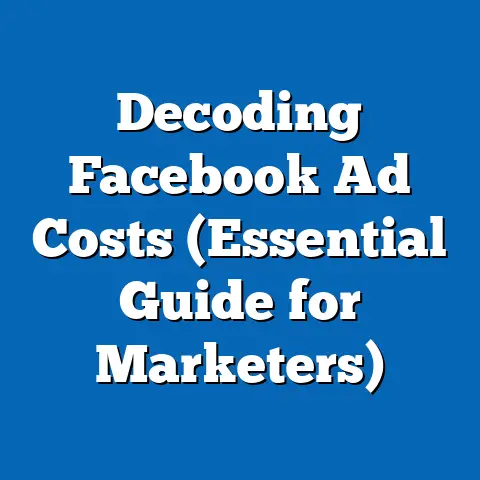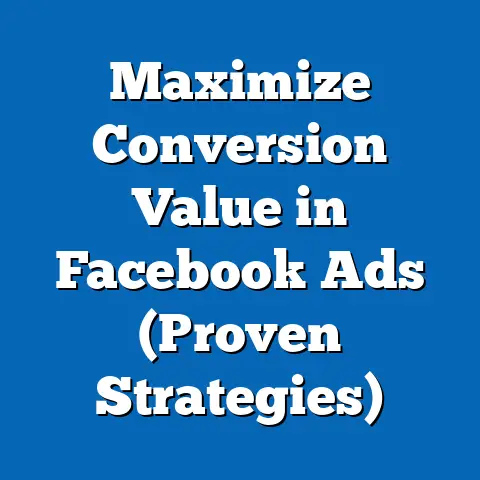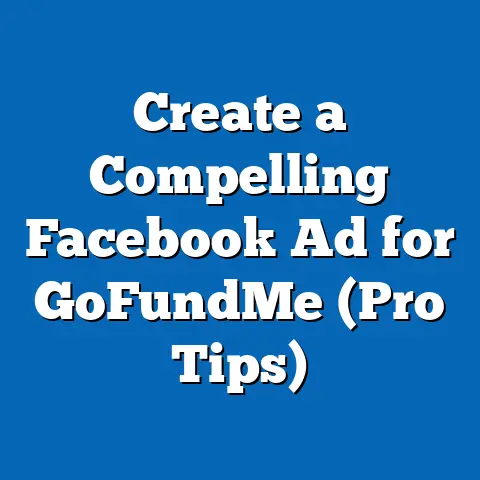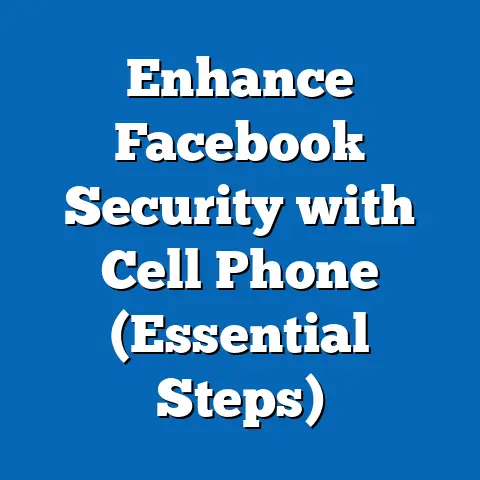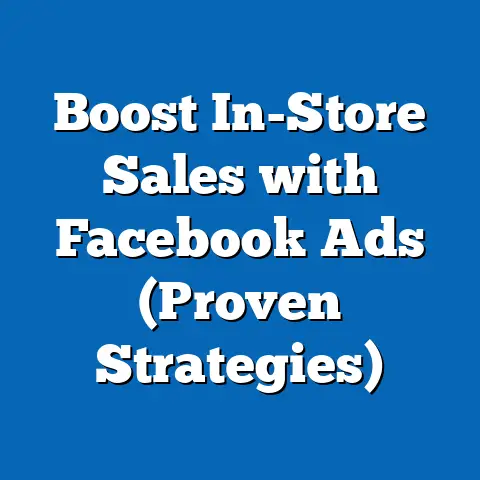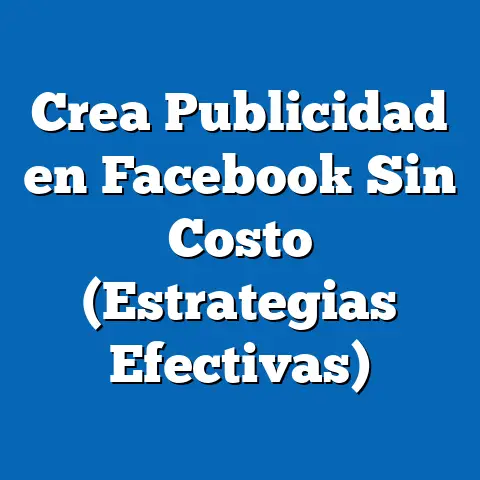Master Facebook Page Post Ads (Unlock Engagement Secrets)
Facebook is a massive platform, a digital town square where billions connect, share, and discover. For businesses, it’s a goldmine – particularly for those in the pet industry. And let me tell you, the pet industry is booming! I’ve seen firsthand how the love for our furry, scaly, or feathered friends translates into a massive market. With pet ownership soaring in recent years, the demand for pet-related products and services has exploded. Everyone wants the best for their companions.
That’s where Facebook Page Post Ads come in. They are a powerful tool that can help you connect with pet owners, showcase your offerings, and build a loyal community. Think of it as casting a wide net in a lake teeming with fish – you just need the right bait. This article isn’t just about running ads; it’s about crafting a strategy that resonates with the heart of every pet lover, driving engagement, and ultimately, boosting your business. I’ll guide you through the secrets of creating compelling content, targeting the right audience, optimizing your posting schedule, and fostering genuine engagement. Let’s dive in!
Understanding Facebook Page Post Ads
Let’s start with the basics. What exactly are Facebook Page Post Ads? Simply put, they’re regular posts from your Facebook Page that you pay to promote to a wider audience. Unlike dedicated ad formats (like carousel ads or collection ads), Page Post Ads leverage existing content you’ve already created. This could be anything from a heartwarming photo of a rescue dog to a video showcasing your new line of organic pet food.
How They Differ from Regular Posts and Other Ad Formats
The key difference between a regular post and a Page Post Ad is reach. A regular post is only seen by your existing followers and their friends (if they engage with it). A Page Post Ad, on the other hand, allows you to target specific demographics, interests, and behaviors, extending your reach far beyond your immediate network.
Compared to other ad formats, Page Post Ads feel more organic and less “salesy.” They blend seamlessly into users’ newsfeeds, making them less intrusive and more likely to be seen as valuable content rather than blatant advertising. I’ve found that this subtle approach often leads to higher engagement rates, as people are more receptive to content that feels authentic and relatable.
The Mechanics: Targeting Options and Potential Reach
The magic of Facebook Page Post Ads lies in its targeting capabilities. Facebook’s algorithm allows you to pinpoint your ideal customer with incredible precision. You can target based on:
- Demographics: Age, gender, location, education level, etc.
- Interests: Pet-related interests like specific breeds, types of animals, or pet activities.
- Behaviors: Purchase history, online activity, and other behaviors that indicate pet ownership.
- Custom Audiences: Upload your existing customer list to target people who have already interacted with your business.
- Lookalike Audiences: Find new customers who are similar to your existing ones.
The potential reach of your Page Post Ads depends on your budget and targeting parameters. A wider audience will naturally require a larger budget. However, remember that a smaller, more targeted audience is often more effective than a large, generic one. I’ve learned this the hard way – throwing money at a broad audience rarely yields the same results as carefully targeting those most likely to be interested in what you offer.
The Importance of Engagement Metrics
Engagement is the lifeblood of Facebook. Likes, shares, and comments are not just vanity metrics; they’re signals to Facebook’s algorithm that your content is valuable and relevant. The more engagement your posts receive, the more likely they are to be shown to a wider audience organically. This creates a snowball effect, where paid promotion leads to increased organic reach.
Engagement also fosters a sense of community around your brand. When people interact with your posts, they feel more connected to your business and more likely to become loyal customers. I always tell my clients, “Think of Facebook as a conversation, not a billboard.” It’s about building relationships, not just broadcasting messages.
Takeaway: Facebook Page Post Ads are a powerful tool for reaching a wider audience with organic-feeling content. Understanding the targeting options and the importance of engagement metrics is crucial for success. Your next step is to define your ideal customer and start brainstorming content that resonates with them.
Crafting Compelling Content
Now, let’s talk about the heart of your Facebook Page Post Ads: the content itself. No amount of clever targeting can save a boring or irrelevant post. In the pet industry, you’re fortunate because pets are inherently adorable and engaging. But you need to harness that natural appeal and channel it into content that truly connects with your audience.
What Makes Content Engaging for Pet Owners?
Pet owners are passionate about their animals. They see them as family members and are eager to share their love and experiences with others. Content that resonates with this sentiment includes:
- Heartwarming Pet Stories: Tales of rescue, recovery, or overcoming adversity. These stories tug at the heartstrings and remind us of the powerful bond between humans and animals.
- Educational Tips: Advice on pet care, training, nutrition, and health. Pet owners are always looking for ways to improve their pets’ lives.
- Fun Facts: Did you know that dogs can smell diseases? Or that cats have a unique “purr” frequency that can promote healing? These kinds of facts are interesting and shareable.
- User-Generated Content (UGC): Photos and videos submitted by your customers. This is a goldmine of authentic content that showcases your products or services in real-life situations.
I’ve seen so many businesses succeed simply by sharing the stories of their customers and their pets. It’s a powerful way to build trust and credibility.
Examples of Successful Pet-Related Facebook Posts
Let’s look at some examples of posts that have garnered high engagement:
- A local animal shelter sharing a story about a rescued dog finding its forever home. The post included before-and-after photos and a heartwarming narrative about the dog’s journey. This post received hundreds of shares and comments, raising awareness for the shelter and its mission.
- A pet food company posting a video tutorial on how to make healthy homemade dog treats. The video was short, easy to follow, and featured adorable dogs enjoying the treats. This post positioned the company as an expert in pet nutrition and drove traffic to their website.
- A pet supply store running a contest asking customers to submit photos of their pets in costumes. The contest generated a ton of UGC and created a fun, interactive experience for followers.
These examples highlight the power of emotional storytelling, educational content, and interactive campaigns.
The Importance of High-Quality Images and Videos
In the visually driven world of social media, high-quality images and videos are essential. Blurry, poorly lit photos or shaky videos will turn off potential customers. Invest in a good camera or smartphone and learn basic photography techniques.
Here are some tips for taking eye-catching photos of pets:
- Use natural light: Avoid harsh artificial lighting, which can create unflattering shadows.
- Get down to their level: Capture photos from your pet’s perspective to create a more intimate and engaging image.
- Focus on their eyes: Sharp, focused eyes are key to capturing your pet’s personality.
- Use props sparingly: A few well-chosen props can add interest to your photos, but don’t overdo it.
Video content is particularly effective for showcasing your products or services in action. Consider creating:
- Tutorials: Demonstrate how to use your products or services.
- Behind-the-scenes footage: Give your followers a glimpse into your business and its operations.
- Testimonials: Share videos of satisfied customers talking about their experiences.
I once helped a local dog groomer create a series of short videos showcasing their grooming services. The videos were a huge hit, driving a significant increase in bookings.
Takeaway: Compelling content is the key to unlocking engagement. Focus on creating content that resonates with pet owners’ emotions, provides value, and is visually appealing. Your next step is to brainstorm content ideas that align with your business goals and target audience.
Targeting the Right Audience
Even the most captivating content will fall flat if it doesn’t reach the right people. That’s why audience targeting is so crucial for Facebook Page Post Ads. It’s about finding the pet owners who are most likely to be interested in your products or services.
The Importance of Audience Targeting
Think of it like this: you wouldn’t try to sell dog food to cat owners, right? Similarly, you need to target your Facebook ads to people who are actually interested in what you have to offer. This not only increases your engagement rates but also improves your return on investment (ROI).
Targeting allows you to:
- Reach more relevant customers: Focus your advertising efforts on people who are most likely to convert.
- Reduce wasted ad spend: Avoid showing your ads to people who are not interested in your products or services.
- Improve engagement rates: Increase the likelihood of people liking, sharing, and commenting on your posts.
- Drive more sales: Ultimately, targeting helps you generate more revenue.
Using Facebook’s Targeting Options
Facebook offers a wide range of targeting options, allowing you to reach specific demographics, interests, and behaviors. Let’s explore some of the most relevant options for pet businesses:
- Demographics: Target pet owners based on age, gender, location, education level, and other demographic factors. For example, you might target women aged 25-54 who live in a specific geographic area.
- Interests: Target people who have expressed an interest in pets, animals, or specific breeds. For example, you might target people who like pages related to Golden Retrievers or cat adoption.
- Behaviors: Target people who have purchased pet-related products online or who have visited pet-related websites. This is a great way to reach people who are actively looking for pet products or services.
- Custom Audiences: Upload your existing customer list to target people who have already interacted with your business. This is a highly effective way to re-engage existing customers and encourage repeat purchases.
- Lookalike Audiences: Find new customers who are similar to your existing ones. This is a powerful way to expand your reach and find new potential customers.
Creating Audience Personas
To effectively target your Facebook ads, it’s helpful to create audience personas. These are fictional representations of your ideal customers, based on research and data.
For example, you might create a persona for “Sarah,” a 35-year-old woman who owns a Golden Retriever and loves to take her dog on hikes. Sarah is interested in healthy pet food, durable dog toys, and outdoor gear.
By creating audience personas, you can better understand your target audience’s needs, interests, and behaviors. This will help you create more targeted and effective Facebook ads.
Takeaway: Audience targeting is essential for reaching the right pet owners and maximizing your ROI. Use Facebook’s targeting options to pinpoint your ideal customer and create audience personas to better understand their needs and interests. Your next step is to define your target audience and start experimenting with different targeting options.
Timing and Frequency of Posts
Timing is everything, they say. And when it comes to Facebook, that’s often true. Knowing when your target audience is most active on Facebook can significantly impact the engagement rates of your Page Post Ads.
Analyzing the Best Times to Post
There’s no one-size-fits-all answer to the question of when to post on Facebook. The best time to post depends on your specific target audience and their online habits. However, there are some general guidelines you can follow:
- Weekdays vs. Weekends: Generally, engagement tends to be higher on weekdays, especially during lunch breaks and after work hours. Weekends can also be effective, but it depends on your audience.
- Time of Day: Consider when your target audience is most likely to be online. For example, if you’re targeting working professionals, you might want to post during their commute or after they get home from work.
- Industry-Specific Trends: Research industry-specific trends to identify the best times to post for pet-related content. For example, you might find that pet owners are more active on Facebook in the evenings when they’re relaxing with their pets.
I’ve found that using Facebook Insights is invaluable for determining the best times to post. This tool provides data on when your followers are most active on Facebook, allowing you to optimize your posting schedule.
Finding the Right Posting Frequency
Posting too often can overwhelm your audience and lead to unfollows. Posting too infrequently can cause your brand to fade into the background. Finding the right balance is key.
- Quality over Quantity: Focus on creating high-quality, engaging content rather than churning out a large volume of mediocre posts.
- Consistency is Key: Maintain a consistent posting schedule to keep your audience engaged and informed.
- Experiment and Analyze: Test different posting frequencies to see what works best for your audience. Monitor your engagement rates and adjust your schedule accordingly.
I typically recommend posting 3-5 times per week. However, this is just a guideline. You may need to adjust your posting frequency based on your specific business goals and audience.
Testing Different Posting Times and Frequencies
The best way to determine the optimal posting schedule for your business is to experiment and analyze the results.
- Use Facebook Insights: Track your engagement rates for different posting times and frequencies.
- A/B Testing: Create two versions of a post and schedule them to be published at different times. Compare the engagement rates to see which time performs better.
- Monitor Your Competitors: See when your competitors are posting and what kind of engagement they’re getting.
Remember, what works for one business may not work for another. It’s important to find a posting schedule that aligns with your specific audience and goals.
Takeaway: Timing and frequency are important factors in maximizing engagement on Facebook. Analyze your audience’s online habits, experiment with different posting schedules, and use Facebook Insights to track your results. Your next step is to create a posting schedule that aligns with your business goals and target audience.
Engaging with Your Audience
Facebook is a social platform, and it’s important to be social! Engaging with your audience is crucial for building a loyal community around your pet business. It’s not enough to simply post content; you need to interact with your followers, respond to their comments and messages, and encourage conversations.
The Importance of Interaction and Engagement
Think of your Facebook Page as a virtual gathering place for pet lovers. It’s a place where they can connect with each other, share their experiences, and learn more about your business. By fostering a sense of community, you can:
- Increase brand loyalty: Customers who feel connected to your brand are more likely to become repeat customers.
- Generate word-of-mouth marketing: Engaged customers are more likely to recommend your business to their friends and family.
- Improve your brand reputation: Responding to comments and messages shows that you care about your customers and their opinions.
- Gain valuable feedback: By listening to your customers, you can identify areas for improvement in your products or services.
Strategies for Responding to Comments and Messages
Responding to comments and messages in a timely and professional manner is essential. Here are some tips:
- Respond promptly: Aim to respond to comments and messages within 24 hours.
- Be polite and professional: Even if you disagree with a comment, always respond in a respectful manner.
- Personalize your responses: Avoid using generic responses. Take the time to address each comment or message individually.
- Ask questions: Encourage conversations by asking questions and inviting your followers to share their experiences.
- Address negative feedback: Don’t ignore negative feedback. Use it as an opportunity to learn and improve your business.
I’ve seen businesses turn negative reviews into positive experiences simply by responding to the customer’s concerns and offering a solution.
Engagement Tactics: Polls, Contests, and Questions
Here are some engagement tactics you can use to encourage conversations and interactions on your Facebook Page:
- Polls: Ask your followers for their opinions on pet-related topics. For example, you might ask, “What’s your favorite breed of dog?”
- Contests: Run contests that encourage followers to submit photos or videos of their pets.
- Questions: Ask open-ended questions that prompt followers to share their pet experiences. For example, you might ask, “What’s the funniest thing your pet has ever done?”
- Live Q&A Sessions: Host live Q&A sessions with a veterinarian or pet expert. This is a great way to provide valuable information to your followers and build trust.
- Share User-Generated Content: Feature photos and videos submitted by your customers. This is a great way to show your appreciation for their support and encourage others to share their content.
Takeaway: Engaging with your audience is crucial for building a loyal community around your pet business. Respond to comments and messages, encourage conversations, and use engagement tactics to create a fun and interactive experience for your followers. Your next step is to implement some of these engagement tactics on your Facebook Page and track the results.
Analyzing and Optimizing Your Ads
You’ve crafted compelling content, targeted the right audience, optimized your posting schedule, and engaged with your followers. Now, it’s time to analyze the performance of your Facebook Page Post Ads and optimize your campaigns for maximum impact.
The Importance of Monitoring Performance
Monitoring the performance of your ads is essential for understanding what’s working and what’s not. It allows you to:
- Identify your best-performing content: Determine which types of posts are resonating with your audience.
- Optimize your targeting: Refine your targeting parameters to reach the most relevant customers.
- Improve your ROI: Make data-driven decisions to maximize your return on investment.
- Stay ahead of the competition: Keep track of your competitors’ performance and adapt your strategies accordingly.
Key Metrics to Track
Here are some key metrics to track when analyzing the performance of your Facebook Page Post Ads:
- Reach: The number of unique people who saw your ad.
- Impressions: The number of times your ad was displayed.
- Engagement Rate: The percentage of people who engaged with your ad (likes, shares, comments).
- Click-Through Rate (CTR): The percentage of people who clicked on your ad.
- Conversion Rate: The percentage of people who took a desired action after clicking on your ad (e.g., making a purchase, signing up for a newsletter).
- Cost Per Click (CPC): The average cost you paid for each click on your ad.
- Cost Per Conversion (CPC): The average cost you paid for each conversion.
Facebook Insights provides detailed data on these metrics, allowing you to track the performance of your ads over time.
Tips for Refining and Optimizing Your Campaigns
Here are some tips for refining and optimizing your Facebook Page Post Ad campaigns:
- A/B Testing: Test different versions of your ads to see which ones perform better. For example, you might test different headlines, images, or calls to action.
- Targeting Refinement: Refine your targeting parameters based on the performance of your ads. For example, if you find that a particular demographic is not responding well to your ads, you can exclude them from your targeting.
- Content Optimization: Optimize your content based on the engagement rates of your posts. For example, if you find that videos are performing better than photos, you can focus on creating more video content.
- Budget Allocation: Allocate your budget to the best-performing ads and campaigns.
- Stay Up-to-Date: Keep track of the latest Facebook advertising features and best practices.
Takeaway: Analyzing and optimizing your ads is crucial for maximizing your ROI. Track key metrics, experiment with different strategies, and make data-driven decisions to improve the performance of your campaigns. Your next step is to start monitoring the performance of your Facebook Page Post Ads and implementing these optimization tips.
Conclusion
Mastering Facebook Page Post Ads in the pet niche requires a strategic approach to content, targeting, and engagement. By creating compelling content that resonates with pet owners’ emotions, targeting the right audience with precision, optimizing your posting schedule, and fostering genuine engagement, you can build a loyal community around your pet business and enhance your online presence.
Remember, it’s not just about running ads; it’s about building relationships. By focusing on creating valuable content and engaging with your followers, you can unlock the full potential of Facebook Page Post Ads and drive meaningful results for your business.
So, go ahead and implement these strategies in your own Facebook marketing efforts. Experiment, analyze, and optimize your campaigns to see what works best for your specific audience and goals. With the right approach, you can effectively connect with pet owners, showcase your offerings, and grow your business. Good luck, and happy advertising!

